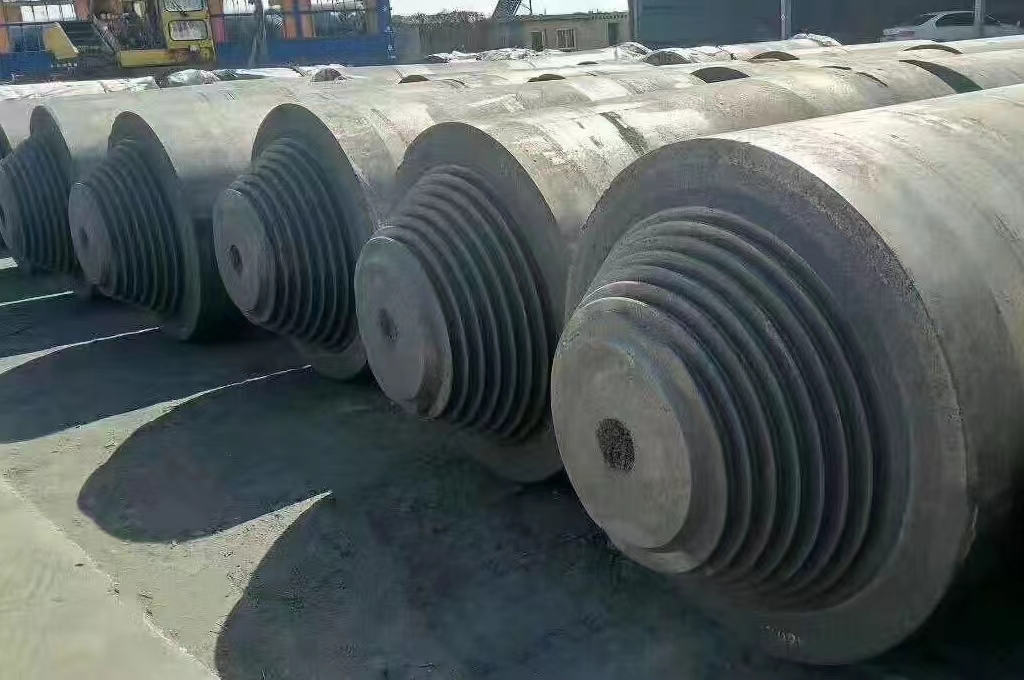Fabricação:
O método de preparação de eletrodos de carbono inclui, principalmente, as etapas de loteamento, moldagem, torrefação e processamento mecânico.
Índice
AlternarDosagem: As principais matérias-primas incluem antracito calcinado eletricamente, coque de petróleo, fragmentos de grafite, piche de alcatrão de carvão etc. Essas matérias-primas são misturadas em uma determinada proporção para preparar o material condutor carbonáceo necessário.
Moldagem: As matérias-primas misturadas são submetidas a um processo de moldagem para formar o formato desejado.
Torrefação: O material formado é torrado para solidificar a forma e melhorar as propriedades condutoras do material.
Usinagem: O material torrado é processado mecanicamente, como corte e retificação, para atender a requisitos específicos de tamanho e forma.
A principal diferença entre o eletrodo de grafite e o eletrodo de carbono
Composição e processo de preparação:
O principal componente do eletrodo de grafite é o grafite. Seu processo de preparação inclui a transformação de matérias-primas (como coque de petróleo e coque de asfalto) em espaços em branco para eletrodos e, em seguida, colocá-los em um forno de resistência de grafitização a uma temperatura de 2.000 a 2.500°C para grafitização.
O eletrodo de carbono é feito de antracito de baixo teor de cinzas, coque metalúrgico, coque de asfalto e coque de petróleo como matérias-primas, adicionando aglutinantes (como asfalto e alcatrão), mexendo uniformemente a uma temperatura adequada, pressionando e formando e, por fim, assando lentamente em um forno de assar. Seu processo de preparação é mais complicado do que o do eletrodo de grafite, exigindo cozimento em alta temperatura, moldagem em alta pressão e outros processos.
Resistividade:
A resistividade do eletrodo de carbono é maior do que a do eletrodo de grafite, o que significa que o eletrodo de carbono não é tão bom quanto o eletrodo de grafite em termos de condutividade. Essa também é uma diferença importante entre os dois em termos de uso. A resistividade do eletrodo de grafite é geralmente de 6μΩ.m, e a resistividade do eletrodo de carbono é geralmente de 11μΩ.m.
Diâmetro:
O diâmetro máximo do eletrodo de grafite pode chegar a 750 mm, enquanto o diâmetro do eletrodo de carbono é muito maior, de 960 a 1400 mm.
Aplicativo:
Devido à sua excelente condutividade e estabilidade química, o eletrodo de grafite é amplamente utilizado no arco elétrico forno indústria siderúrgica, fundição de metais não ferrosos e outros campos. O eletrodo de carbono, devido à sua maior resistividade, é usado principalmente em alguns fornos elétricos a arco de pequeno e médio porte com requisitos de baixa condutividade, fundição de fósforo amarelo, ferro-ligas etc.
Em resumo
A fabricação do eletrodo de carbono inclui as etapas de dosagem, moldagem, torrefação e processamento mecânico. As principais diferenças entre o eletrodo de grafite e o eletrodo de carbono são a composição, o processo de preparação, a resistividade e o uso. O eletrodo de grafite é mais comum e importante em muitas aplicações industriais devido à sua alta pureza e excelente condutividade.

